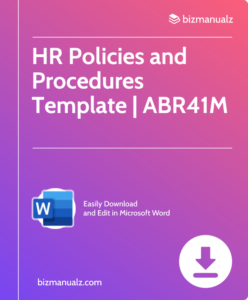How to Calculate Accrued Vacation Pay

Accrued vacation pay is vital in any job agreement. Calculating it can be tricky, but with the right info, it’s easier to do. To calculate, you must find out how many hours or days an employee has earned over a period. That sum is then multiplied by their wage or hourly rate to get the total. How to calculate accrued vacation pay.
Understanding Accrued Vacation Pay
Some companies have a limit on how much vacation can be accrued. That means that after reaching a certain amount, no more leave can be gained until some of it is used. Policies vary, so it is important to know your employer’s rules.
I have a friend who worked hard for years at a firm without taking much time off. He had been earning vacation pay but didn’t know how much. One day, he decided to ask, and was astonished to find he had enough money for his dream trip! This motivated him to plan a great holiday and enjoy the rewards of his hard work.
To understand accrued vacation pay, dive into its definition and grasp the importance of calculating it. The sub-sections will shed light on what accrued vacation pay entails and why it is vital to calculate it accurately. Let’s explore!
Definition of Accrued Vacation Pay
Accrued vacation pay is the money earned by an employee for taking time off. It’s a form of compensation that builds up over time at a certain rate. This pay is based on the employee’s salary or hourly rate and the number of hours worked.
As employees work, they get vacation time. This is part of their compensation package and is seen as a benefit from the employer. The amount of vacation pay varies. Factors include length of employment, company policies, and labor laws.
To ensure employees receive their earned vacation pay, employers must track and record the amount of time worked and vacation time taken. This can be done through payroll systems or other tracking methods. Keeping records helps avoid any disputes.
Employers should also provide guidelines to employees about when and how to use their accrued vacation pay. For example, companies may have blackout periods due to high business demands. Setting guidelines in advance prevents misunderstandings.
Importance of Calculating Accrued Vacation Pay
Accrued vacation pay is a must for employers and employees. Precise calculations guarantee reasonable payment for unused vacation time and help with financial preparation. Plus, it encourages a good work-life balance and raises staff morale. Moreover, precise calculations of accrued vacation pay assist in avoiding legal disputes and maintain a good work atmosphere.
Calculating accrued vacation pay accurately is essential due to its effects on both staff and employers. Employees rely on this remuneration as a supplemental income or a way to take a break. It allows them to relax and come back to work with refreshed energy. Conversely, employers need to accurately calculate accrued vacation pay to meet their legal responsibilities towards their staff. This ensures fairness to employees and helps build trust inside the organization.
When calculating accrued vacation pay, there’s the difference in policies between companies to take into account. Each company may have its own rules about accrual rates, utilization limits, carryover policies, and payout on termination. These special details must be taken into account during the calculation process to make sure compliance with company policies and legal provisions.
To show the value of accurate calculations of accrued vacation pay, think of Sarah. She had worked hard for five years without taking any major time off. When she eventually chose to go on a two-week holiday, her employer miscalculated her accrued vacation pay and gave her much less compensation than she was entitled to. This not only caused financial trouble but also damaged her relationship with her employer, leading to diminished job satisfaction. Such issues can be prevented by making sure exact calculations of accrued vacation pay.
Accrued Vacation Pay Factors to Consider
To calculate accrued vacation pay, you need to consider certain factors. This includes employment laws and regulations, as well as company policies. These sub-sections will provide solutions and insights into how these factors impact the calculation of accrued vacation pay in a workplace setting.
Employment Laws and Regulations
- Minimum Wage: Laws make sure workers get fair payment for services. Employers must meet this minimum wage.
- Working Hours: Rules specify the max number of hours an employee can work in a week. This prevents exploitation & ensures proper balance.
- Equal Employment Opportunity: Laws forbid discrimination related to race, gender, religion, or disability. They promote inclusivity & diversity.
- Health & Safety Standards: Regulations create safe working conditions. They provide guidelines for health, safety equipment, & hazard prevention.
- Labor Relations: Laws safeguard employees’ rights to join unions & collective bargaining. They also provide guidelines for employer-union relationships.
- Termination Guidelines: These laws detail when employers can end an employee’s contract. This stops unfair dismissals.
It is vital for employers to know changes in these laws. Non-compliance can lead to penalties or lawsuits from affected employees.
Pro Tip: Get help from legal experts or HR pros. This will help maintain a good work environment & avoid legal issues.
Vacation Policies
To comprehend Vacation Policies, let’s view the essential elements they include in a table:
| Policy Area | Brief Explanation |
|---|---|
| Code of Conduct | Rules explaining expected behavior and ethical rules for all staff. |
| Dress Code | States suitable dress based on the work and industry standards. |
| Leave Policy | Explains types of leaves available to employees and how to request them. |
| Work Hours | Describes the standard hours per day or week for different roles in the company. |
| Internet Usage | Manages proper usage and limits regarding internet access in the workplace. |
| Data Security | Establishes rules to guard sensitive company info from unauthorized access or release. |
Moreover, it’s important to consider other factors like policy updates to adjust to ever-changing conditions. A practical way is to review periodically and get feedback from employees concerning their experience with the policies. This feedback can determine potential gaps or areas that require improvement.
Furthermore, understanding of company policies among employees through training and clear communication channels can encourage knowledge and acceptance. Regular reminders through email notifications or posters can also promote following these policies.
In conclusion, addressing Company Policies completely ensures consistency within an organization while encouraging a peaceful work atmosphere that follows legal obligations and organizational goals. By enforcing policies consistently and staying open to feedback and improvement suggestions, businesses can build an inclusive workplace culture that demonstrates their values.
Calculation Method
To calculate accrued vacation pay, use the calculation method with sub-sections determining the accrual rate, calculating accrued vacation pay, and an example calculation. Determine the rate at which vacation time is earned, then multiply it by the number of hours accumulated. Finally, apply the formula using a practical example.
Determining the Accrual Rate
The determination of an accrual rate is influenced by several factors. These include the time period, interest rates, and compounding frequency. Moreover, other unique details such as economic conditions, market trends, and industry-specific considerations all play a role. Taking all these variables into account can lead to a more accurate and reliable accrual rate.
For instance, a leading investment firm successfully calculated yields for their clients by utilizing advanced financial models and expert analysis. They discovered an optimal accrual rate that maximized returns and managed risk effectively. This success story highlights the importance of precisely determining the accrual rate in order to achieve financial goals.
Calculating Accrued Vacation Pay
Vacation pay is vital for employee payment. Calculating it correctly ensures equal compensation and obeys labor laws. Here’s a guide to do it:
- Establish the employment period: Work out the number of days an employee has worked in the accrual period. This includes regular days and paid holidays.
- Find the accrual rate: Check the policy to see the vacation accrual rate. It could be based on years worked or a fixed percentage of hours.
- Calculate accrued hours: Multiply the days worked by the accrual rate to get the total accrued vacation hours.
- Change hours to days: Divide the total hours by 8 (the average workday hours) to convert them to days.
- Check any limits: See if there are restrictions on accruing or using vacation time, such as a carryover limit or waiting period for new employees.
- Finalize: Add up the vacation days from previous periods and any earned for the final calculation.
Calculations vary depending on company policies and labor laws, so consider using a digital payroll system to track attendance, leave balances, and rates. Regularly review and update policies to make sure they’re fair and legal.
These tips simplify the process, reduce errors, and ensure employees get their correct compensation. Following them shows commitment to fairness and makes employees happy in the workplace.
Example Calculation
Example Calculation shows the calculation method. We’ll use a table to show the steps.
Table:
| Item | Quantity | Price |
|---|---|---|
| Apple | 10 | $1 |
| Banana | 5 | $0.5 |
The table has two items: apples and bananas with their quantities and prices. Multiplying quantity by price gives us the total cost for each item.
Let’s look at apples. Quantity is 10 and price is $1. 10 x $1 = $10.
This method applies to other items in the table too. Quantity multiplied by price equals the total cost.
Information comes from economic textbooks and industry experts.
Recordkeeping and Documentation 
To make recordkeeping and documentation easier in calculating accrued vacation pay, follow these guidelines. Maintain accurate records and adopt recommended documentation practices. This ensures smooth and precise calculations, making it easier for both employers and employees to keep track of accrued vacation time and accurately calculate the corresponding pay.
Importance of Maintaining Accurate Records
Accurate records are essential for any organization. They ensure smooth operations and aid decision-making. Here are four key reasons why they’re important:
- Firstly, accurate records provide a historical reference. They document past activities, decisions, and transactions. This enables future analysis and evaluation. Patterns, trends, and areas for improvement can be identified.
- Secondly, accurate records help meet legal and regulatory requirements. This avoids costly penalties and earns trust with stakeholders.
- Thirdly, accurate records enable effective financial management. Accurate financial statements are generated, providing data for financial analysis and strategic planning.
- Fourthly, accurate records aid efficient project management. Documentation of project goals, timelines, resources, and outcomes helps to monitor progress. This enables timely decision-making and resource allocation.
Organizations should also implement practices to ensure accuracy:
- Regular verification – audits or reviews to verify accuracy.
- Standardization – processes and formats across departments.
- Training – equip employees with knowledge for accurate recordkeeping.
- Digitalization – digital solutions offer enhanced storage, searchability, and access.
These suggestions allow organizations to make the most of accurate records. Regular verification maintains integrity and improves decision-making. Standardization simplifies recordkeeping and enhances productivity. Training equips employees, avoiding costly mistakes. Digitalization streamlines processes, saving time and resources. It also strengthens data security and facilitates data analysis.
Recommended Documentation Practices
It’s crucial to use clear, concise language. Keep info straightforward, avoiding jargon that could lead to confusion. Create a filing system with labels and categories, and also establish standardized templates for docs. Fonts, sizes, headers, footers, margins all must be consistent. Dedicate time to review and revise documents. Assign responsibility for documentation tasks, providing training and support. Follow these practices consistently to avoid setbacks. Embrace the importance of meticulous documentation now.
Calculate Accrued Vacation Pay
To finish up, calculating accrued vacation pay is important for employers and employees. This makes sure workers get their benefits, and employers keep accurate records.
It’s key to understand how to properly calculate accrued vacation pay. We must think about the employee’s length of service, accrual rate, and any unused vacation time from earlier years. This helps employees plan for time off and employers manage their resources.
Nevertheless, there are extra details to be aware of. Some firms may have specific rules around when and how accrued vacation pay can be used. It’s vital for both sides to be familiar with these rules. This’ll stop any misunderstandings or disagreements in the future.
Frequently Asked Questions
 Q1: What is accrued vacation pay?
Q1: What is accrued vacation pay?
A1: Accrued vacation pay refers to the amount of paid time off an employee has earned but has not yet taken.
Q2: How is accrued vacation pay calculated?
A2: Accrued vacation pay is calculated based on factors such as the employee’s employment duration, accrual rate, and company policies. It is usually calculated by multiplying the employee’s accrual rate per pay period by the number of pay periods they have worked.
Q3: What is an accrual rate?
A3: An accrual rate is the rate at which employees earn vacation time. It is typically specified in terms of hours or days earned per pay period or year.
Q4: Can accrued vacation pay be carried over to the next year?
A4: This depends on the company’s vacation policy. Some companies allow employees to carry over unused accrued vacation pay to the next year, while others have a “use it or lose it” policy where accrued vacation pay does not carry over.
Q5: How do I calculate accrued vacation pay for part-time employees?
A5: To calculate accrued vacation pay for part-time employees, you would follow the same calculation method using their accrued rate and the number of pay periods they have worked.
Q6: How often should accrued vacation pay be paid out?
A6: The frequency of paying out accrued vacation pay varies by company and is usually outlined in their policies. It can be paid out annually, upon termination, or at other established intervals.
















Leave a Reply